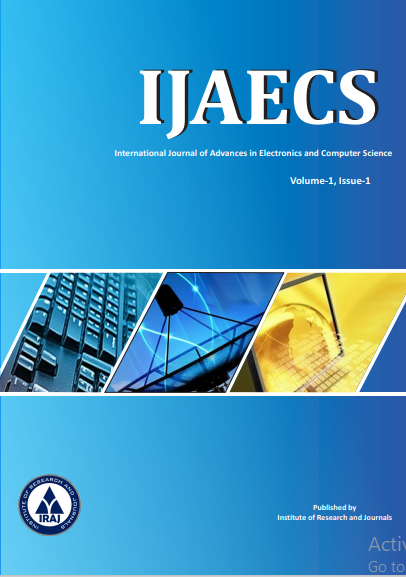Publish In |
International Journal of Advances in Electronics and Computer Science-IJAECS |
 Journal Home Volume Issue |
||||||||
Issue |
Volume-8,Issue-6 ( Jun, 2021 ) | |||||||||
Paper Title |
Link Prediction in Complex Network: Gravitation Force and Machine Learning Approach | |||||||||
Author Name |
Sanjay Kumar, Parth Gupta, Shrey Gupta, Yatesh Dabas | |||||||||
Affilition |
Department of Computer Science and Engineering, Delhi Technological University, Shahbad Daulatpur, Main Bawana Road Delhi 110042, India | |||||||||
Pages |
22-28 | |||||||||
Abstract |
In recent years, link prediction in complex networks has acquired numerous tractions. Many physical-world difficulties are demonstrated as complex networks which require link prediction in order to anticipate upcoming network changes. Link Prediction is used to judge and answer a variety of important and fascinating problems, such as recommending alternate ways for triangulation in different transport variation network, predicting a disease outburst in a disease network, finding junk emails, and regulatory discretion in a network of human communication, and so on. Quite a few methods to link prediction have been investigated, including topological and non-topological features, supervised and unsupervised learning methods, and so on. The strategies that are frequently used, need a lot of computational power and time, which makes them unproductive during the growth of network. An approach for taking out local features that might be scaled to great complex networks by putting more focus on local characteristics and by using parallel processing to remove local features quicker is presented in this paper. We develop the gravitational force inspired by nature for predicting links by substituting various centrality and dissimilarity measures for mass and distance, respectively. We also provide a variety of similarity and popularity measures before demonstrating that the gravitational approach, along with our suggested metrics, outperforms previous techniques of link prediction that rely on standard centrality and similarity measurements. | |||||||||
| View Paper | ||||||||||